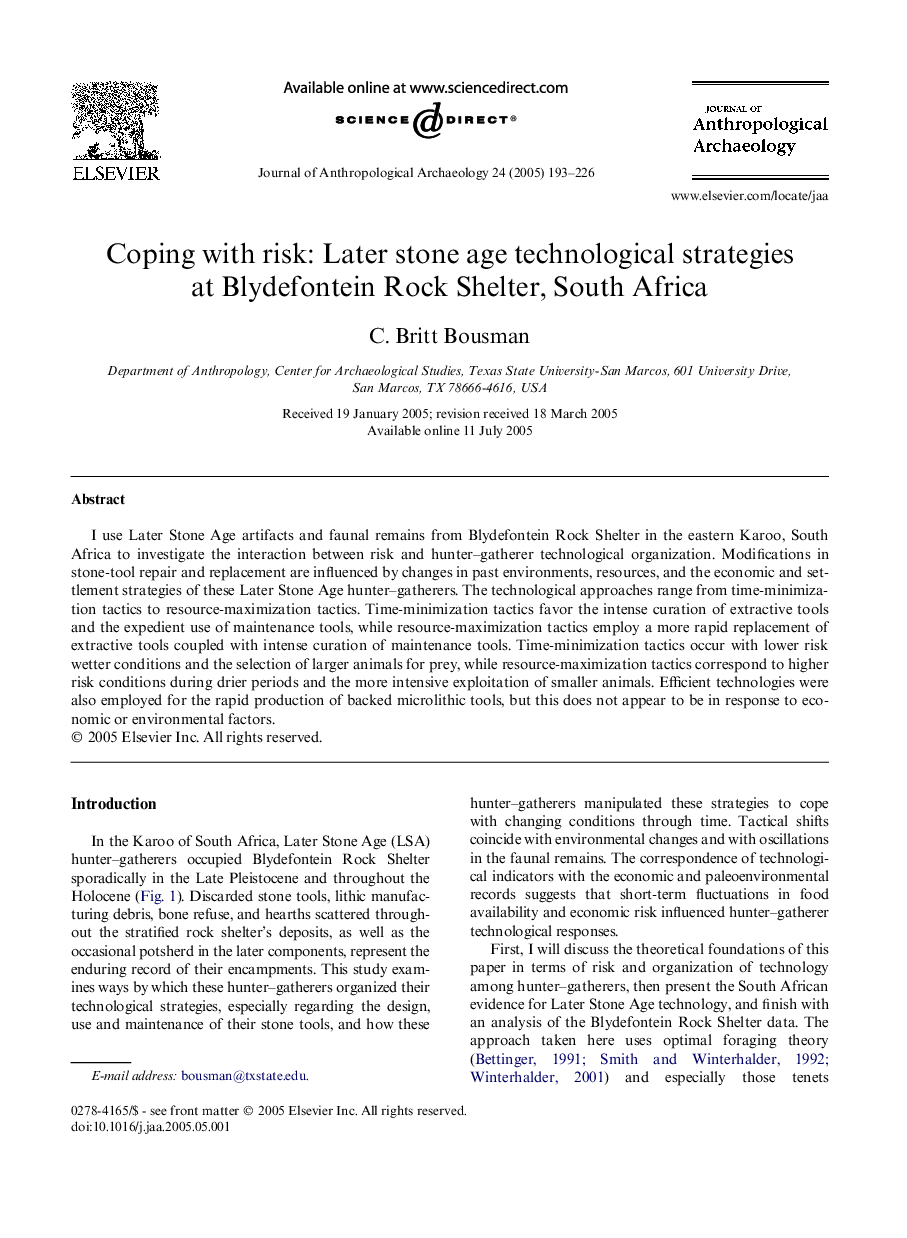| Article ID | Journal | Published Year | Pages | File Type |
|---|---|---|---|---|
| 10498766 | Journal of Anthropological Archaeology | 2005 | 34 Pages |
Abstract
I use Later Stone Age artifacts and faunal remains from Blydefontein Rock Shelter in the eastern Karoo, South Africa to investigate the interaction between risk and hunter-gatherer technological organization. Modifications in stone-tool repair and replacement are influenced by changes in past environments, resources, and the economic and settlement strategies of these Later Stone Age hunter-gatherers. The technological approaches range from time-minimization tactics to resource-maximization tactics. Time-minimization tactics favor the intense curation of extractive tools and the expedient use of maintenance tools, while resource-maximization tactics employ a more rapid replacement of extractive tools coupled with intense curation of maintenance tools. Time-minimization tactics occur with lower risk wetter conditions and the selection of larger animals for prey, while resource-maximization tactics correspond to higher risk conditions during drier periods and the more intensive exploitation of smaller animals. Efficient technologies were also employed for the rapid production of backed microlithic tools, but this does not appear to be in response to economic or environmental factors.
Related Topics
Social Sciences and Humanities
Arts and Humanities
History
Authors
C. Britt Bousman,
